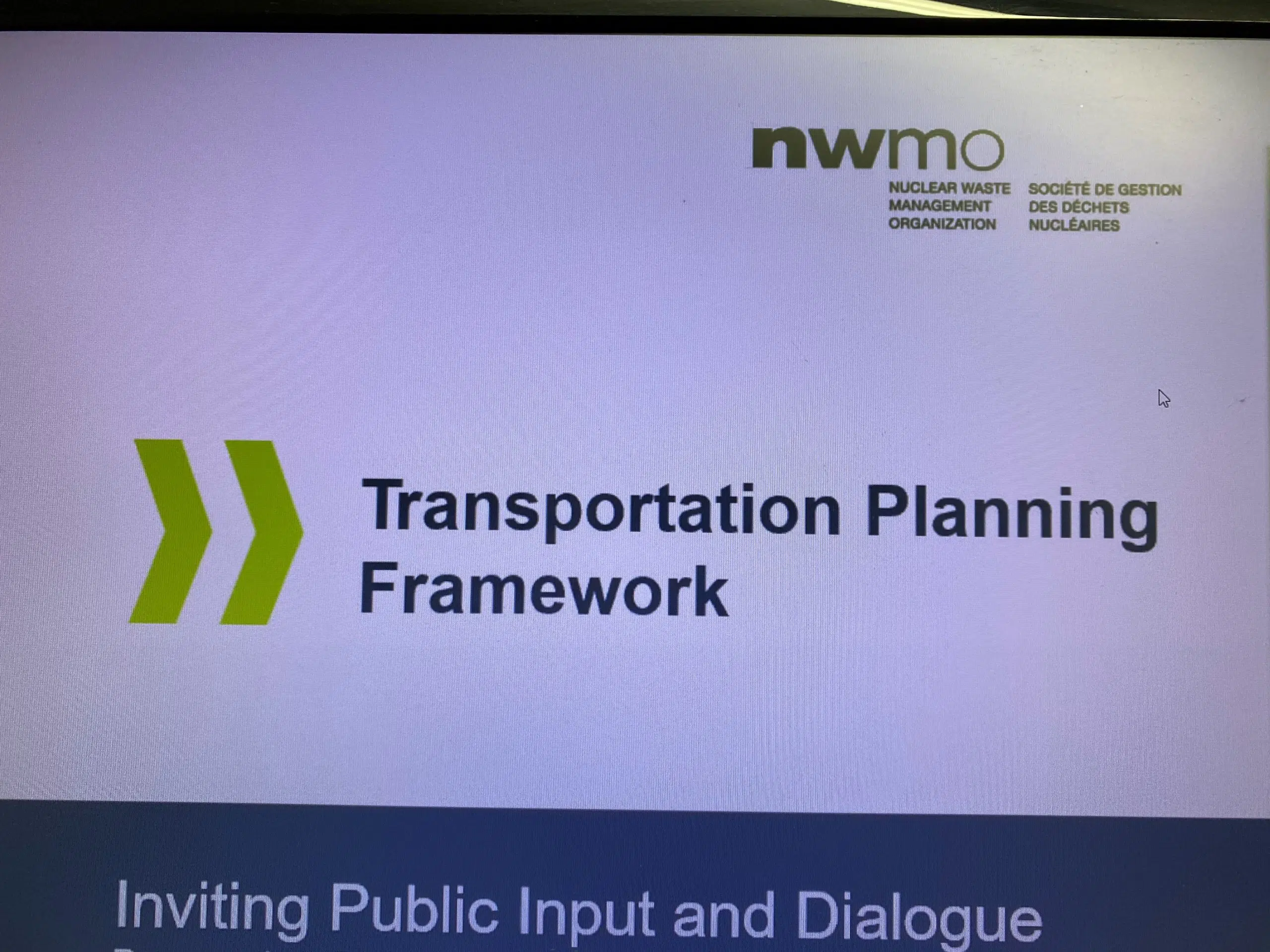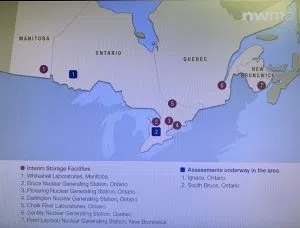
A site in Ignace is up for consideration to become a nuclear repository and the Nuclear Waste Management Organization is looking for feedback on their Transportation Framework plan.
The Rotary Club of Dryden had a chance to provide their input, as the organization was a guest at one of their virtual meetings.
Relationship Manager, Norman Sandberg explains road and rail are the two modes of transportation being considered to carry the fuel.
“Water is a transportation mode that is used, but Canadians earlier in the process made it very clear that transportation of used nuclear fuel across the great lakes is not socially acceptable.”
If road was picked, there would be two trucks per day or by via rail there would be two trains per week.
The fuel would be transported across half the country, from Manitoba or New Brunswick and it could be a combination of both modes of transportation.
Sandberg adds would be a 45 to 50 year transportation period.
“We don’t anticipate being in a position to be able to transportation of used fuel until at least the mid 2040’s, because we have to have a repository not only approved and licensed, but constructed and ready for operation.”
The potential repository sites under assessment right now include one in Ignace and another in Southern Ontario.
Sandberg says one common risk people raise is the possibly of an accident and what that would mean for the fuel on board.
“The testing that we have done and based testing by other nuclear relations in particular the U.K and Germany, we are confident that the transportation package will maintain it’s structural integrity under any imaginable condition.”
The framework was developed in August and part of the plan includes assessing the state of public infrastructure like roads and railways, in order to make improvements.
Sandberg explains based on public input so far protecting the environment is a priority.
“The release of radioactive material into the environment needs to be minimized if not eliminated, we’re talking about being well within the regulatory requirements of emissions of radioactivity.”
 Sandberg stresses there are extensive regulations that have to be met and safety is top of mind.
Sandberg stresses there are extensive regulations that have to be met and safety is top of mind.
The Canadian Nuclear Safety Commission and Transport Canada are responsible for overseeing operations and implementing regulatory requirements that must be met.
Sandberg adds they are committed to listening to the public and have been consulting with Indigenous Peoples among other stakeholders.
NWMO is looking to build confidence and get feedback from the public, to create a socially acceptable plan for transportation.
There are 7 other nuclear storage sites throughout Canada.
Resources and Public Survey from NWMO:
As part of the Nuclear Waste Management Organization’s (NWMO) ongoing journey to implement Canada’s Plan for the safe, long term management of used nuclear fuel, we have released a draft transportation planning framework document.
We are inviting public feedback on this draft framework from Canadians and Indigenous people through an online survey. Information sessions (mindful of public health guidelines), online virtual presentations, and conversations about transportation will also take place over the coming months. This input will help guide and shape future plans for the transportation of used nuclear fuel in Canada.
Since 2016, the NWMO has engaged with Canadians to ensure that future transportation plans are designed to reflect the public’s interests and feedback Moving Forward Together – An Invitation to Review a Draft Planning Framework for the Transportation of Used Nuclear Fuel captures our work to date and encourages us to move further.
Currently, used nuclear fuel is safely stored on an interim basis at existing reactor sites across Canada and would need to be transported to a central repository site. We expect to identify the single, preferred location for the deep geological repository in 2023, to be located in an area with informed and willing hosts. Operation of the deep geological repository and associated transportation of used nuclear fuel would begin in the 2040s.



